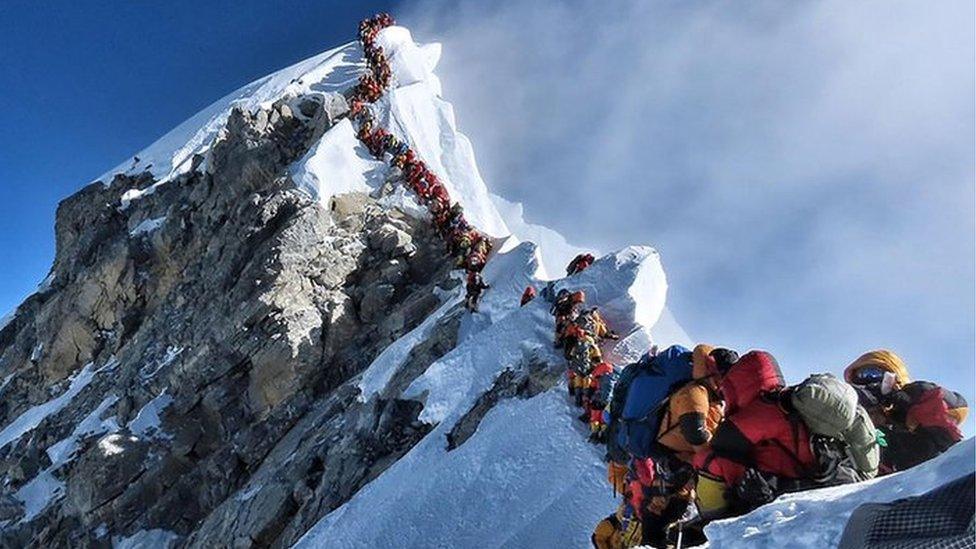Nepal says overcrowding not 'sole reason' for Everest death toll rise
- Published

This photo showing a long queue up to the summit of Everest has gone viral in recent days
Nepal's tourism authority has denied accusations that the rise in Mount Everest deaths is solely due to overcrowding.
The department's director general Dandu Raj Ghimire said other factors including adverse weather conditions had also contributed.
Ten climbers have been reported dead or missing this season.
Photos of long queues near the summit have been widely shared as record numbers ascended the mountain in May.
Mr Ghimire said 381 people had ascended Everest this spring but as periods of fine weather had been short, the number of people on the routes had been "higher than expected".
In his statement, Mr Ghimire put the current death toll at eight, although 10 people have been reported dead or missing so far.
Briton Robin Haynes Fisher, 44, died on Saturday minutes after reaching Everest's summit.
Mr Fisher photographed before ascending Mount Everest
Kevin Hynes, 56, from Ireland, died in his tent on Friday and S茅amus Lawless, also Irish, is presumed dead after falling near the summit.
One Nepalese, four Indians, an Austrian and an American are also dead or missing.
A local tour organiser told AFP that one of the Indian climbers, Nihal Ashpak Bhagwan, died of exhaustion after being "stuck in traffic for more than 12 hours".
Mr Ghimire offered "heartfelt condolences to those who've passed away and prayers to those who are still missing".
"Mountaineering in the Himalayas is in itself an adventurous, complex and sensitive issue requiring full awareness yet tragic accidents are unavoidable," he said.
- Published24 May 2019